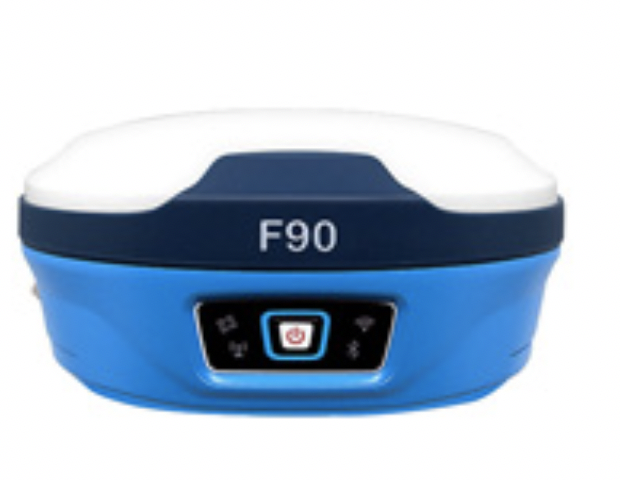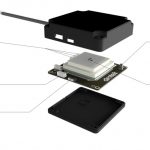Featuring multi constellation with L-Band and satellite-based augmentation system (SBAS), theF90 GNSS/RTK receiver from Geneq Inc., tracks GPS, GLONASS, Galileo and BeiDou and can maximize the tracking to observe all visible GNSS satellite signals, thereby providing maximum performance for accuracy and real-time measurements. F90 also supports L-Band function and can get centimeter accuracy with just one receiver, according to the company.
F90 can quickly search available satellites to quickly get a fixed solution, and its advanced technology is designed to ensure it works well even in harsh environments such as under heavy foliage. Highly integrated Bluetooth, Wi-Fi and 4G network modules reduce the internal signals crosstalk.
Inserted with high-sensitive E-bubble and a new tilt survey algorithm, F90 is calibration-free and also immune to magnetic disturbance and free from limitation of tilt angles. The receiver can measure points where a vertical placement of the pole is not possible such as house corners.
Without affecting accuracy and efficiency, this GNSS receiver is light and small —weighing 1 kilogram and measuring 140 mm x 157 mm x 76 mm.
The receiver features 336 channels and the following satellites: GPS: L1 C/A, L2C, L2E, L5; GLONASS: L1 C/A, L2C, L3; BeiDou: B1, B2, B3; Galileo: E1, E5A, E5B, E5 AltBOC, E6; IRNSS: L5; QZSS: L1CA, L1C, L2C, L5; and SBAS: L1, L5.
. F90 also supports L-Band function and can get centimeter accuracy with just one receiver, according to the company.
F90 can quickly search available satellites to quickly get a fixed solution, and its advanced technology is designed to ensure it works well even in harsh environments such as under heavy foliage. Highly integrated Bluetooth, Wi-Fi and 4G network modules reduce the internal signals crosstalk.
Inserted with high-sensitive E-bubble and a new tilt survey algorithm, F90 is calibration-free and also immune to magnetic disturbance and free from limitation of tilt angles. The receiver can measure points where a vertical placement of the pole is not possible such as house corners.
Without affecting accuracy and efficiency, this GNSS receiver is light and small —weighing 1 kilogram and measuring 140 mm x 157 mm x 76 mm.
The receiver features 336 channels and the following satellites: GPS: L1 C/A, L2C, L2E, L5; GLONASS: L1 C/A, L2C, L3; BeiDou: B1, B2, B3; Galileo: E1, E5A, E5B, E5 AltBOC, E6; IRNSS: L5; QZSS: L1CA, L1C, L2C, L5; and SBAS: L1, L5.






